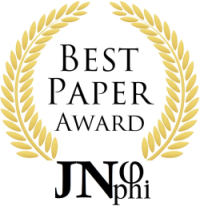Neurophenomenological Oeuvre in Large-Scale Networks: The Neural Dynamics of Subjective Experience
Abstract
Neurophenomenology is a research program that seeks to integrate the fields of neuroscience and phenomenology for the purpose of investigating the nature of human experience. Contemporary neurocognitive models pertaining to self-regulation and execution suggests that individuals interpret objects they perceive and approach as definite in their experiential encounter. Yet, a comprehensive analysis on the phenomenology of awareness and behavior reveals that during the process of detecting or interacting with objects, we experience them in a convoluted manner that underlies an adversarial association of default and executive control networks. In this regard, numerous studies have invested in specific tasks involving creative-thinking that engage large-scale networks during artistic performance to understand the intricate cognitive processes of goal-oriented, self-generated thinking when subjects interact with objects and the world around them. This perspective provides a cognitive neuroscience lens on first-person narrative and third-person neural data co-development through the use of neurofeedback, aiming to enhance our understanding of the dynamic interplay between large-scale neural networks and acknowledges the challenges associated with the concurrent acquisition of both phenomenological and neuroscientific data. By doing so, research gaps and explanations for apparent discrepancies are elaborated, supporting executive function with a more in-depth phenomenological understanding of ourselves.
Keywords:
neurophenomenology, neurofeedback, default-control network, philosophy of mind, executive functionDownloads
Metrics
References
Anderson P. Assessment and development of executive function (EF) during childhood. Child neuropsychology 2002; 8(2):71–82.
Andrews-Hanna J.S and Spreng R.N. The default network and self-generated thought: Component processes, dynamic control, and clinical relevance. Annals of the new York Academy of Sciences 2014; 1316(1):29–52.
Anticevic A, Cole M.W, Murray J.D, Corlett, P.R, Wang X.J, Krystal J.H. The role of default network deactivation in cognition and disease. Trends in cognitive sciences 2012; 16(12):584–592.
Baars B.J. Spontaneous repetitive thoughts can be adaptive: Postscript on “mind wandering”. Psychological bulletin 2010; 136(2):208-210.
Baer J. The case for domain specificity of creativity. Creativity research journal 1998; 11(2):173–177.
Downloads
Published
How to Cite
Issue
Section
Categories
License
Copyright (c) 2023 Nathazsha Gande

This work is licensed under a Creative Commons Attribution-NonCommercial-ShareAlike 4.0 International License.
Authors continue to hold copyright with no restrictions.














